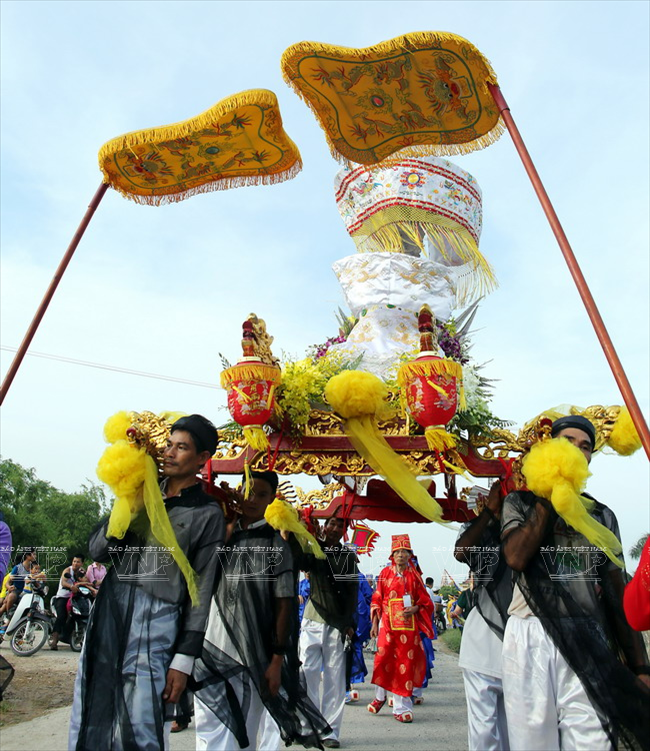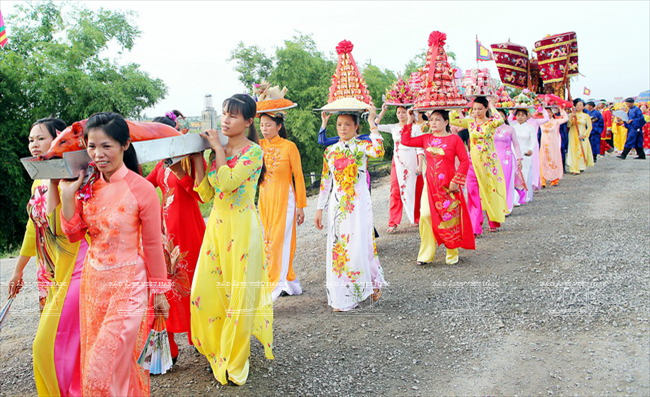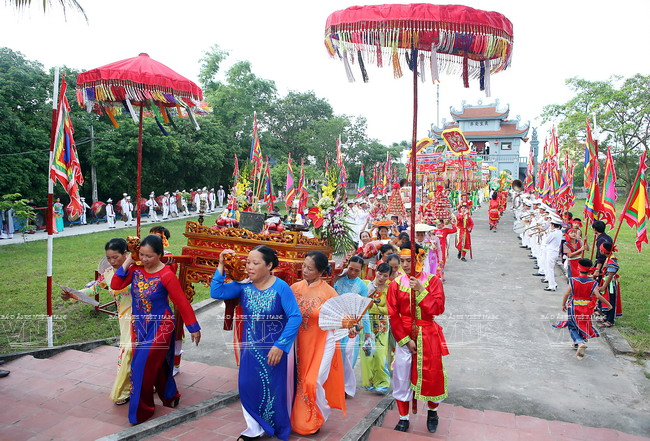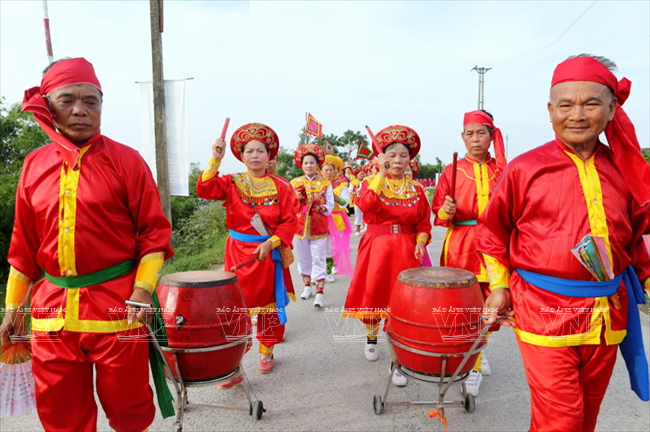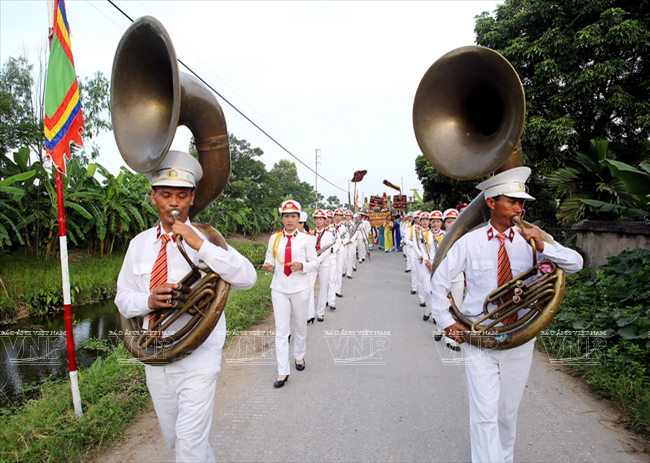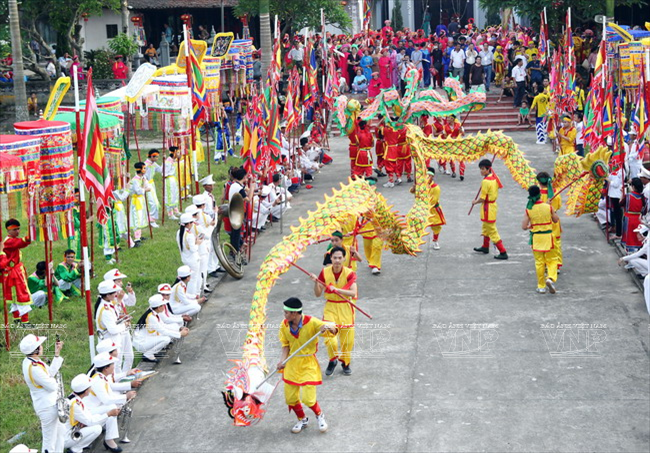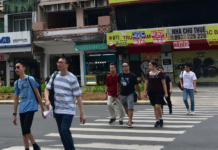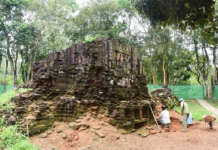According to the ancient words carved on its roof, the temple was built during the Ly Dynasty (the 11th – 12th century). The total area of the temple is 3,000m2, peppered with ancient trees. It is an imposing structure. The three-entrance gates have eight roofs carved with images of dragons, the moon and stylised leaves. In front of the main gate is a semicircular pond with a tower in the middle connected to the bank by a bridge carved with dragons.The pagoda was built according to the Noi Cong Ngoai Quoc (nei gong wai quo) architectural style. Inside the temple there are many valuable worshipping objects, such as the statue of Princess Tien Dung, statues of the three generals which were carved delicately, two palanquins and many altars and parallel sentences.
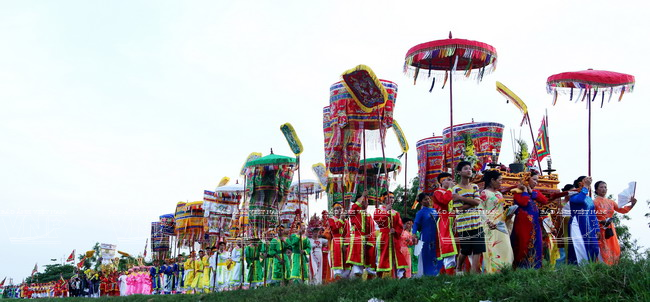 The palanquin procession is about two kilometres long on the dike near the Lanh River. Photo: Trinh Van Bo/VNP  The palanquin procession during Lanh Giang Temple’s Festival.
Instrumentalists participate in the procession at Lanh Giang Temple’s Festival. Photo: Trinh Van Bo/VNP |
The ceremonial part of the festival consists of a palanquin procession with the participation of a large number of locals and tourists. The procession starts from Lanh Giang Temple to Tien Dung Temple where some rites are solemnly held and then the palanquin is brought back to Lanh Giang Temple. The procession is about two kilometres long.
Spicing up the festival is a host of activities, including dragon dances, traditional opera singing, wrestling and games of human chess. There’s also a competition to cook rice in bamboo frames, cockfighting, a duck catching game and a swimming race.
Participating in the festival, tourists are charmed by a show of Hat van-Hau dong, a kind of psychic dance that claims to respond to occult powers and expresses the will and orders of a super-natural being.The centre of attention during Hau dong performances is the medium who dances in front of the altar. To the right of the altar sit two musicians or more, who play a Dan nguyet (moon lute), a flute, a drum, castanets, a gong and cymbals. Hau dong performers are considered to have special powers connecting with spirits. Actually, Hau dong praises gods and historical heroes. Its cultural values can’t be ignored and the cultural institute plans to nominate the art form to UNESCO as an intangible heritage.
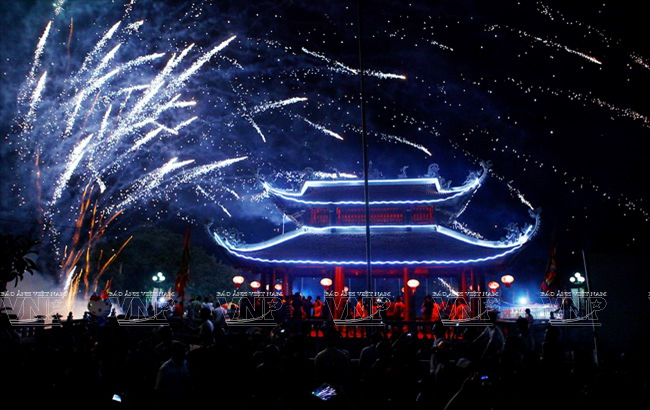 A fire-work performance to open Lanh Giang Temple’s Festival. Photo: Trinh Van Bo/VNP 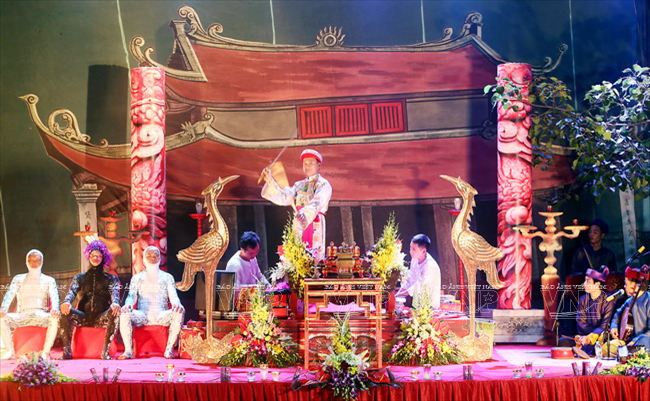 A Hau dong performance at the opening ceremony of Lanh Giang Temple’s Festival. Photo: Trinh Van Bo/VNP |

